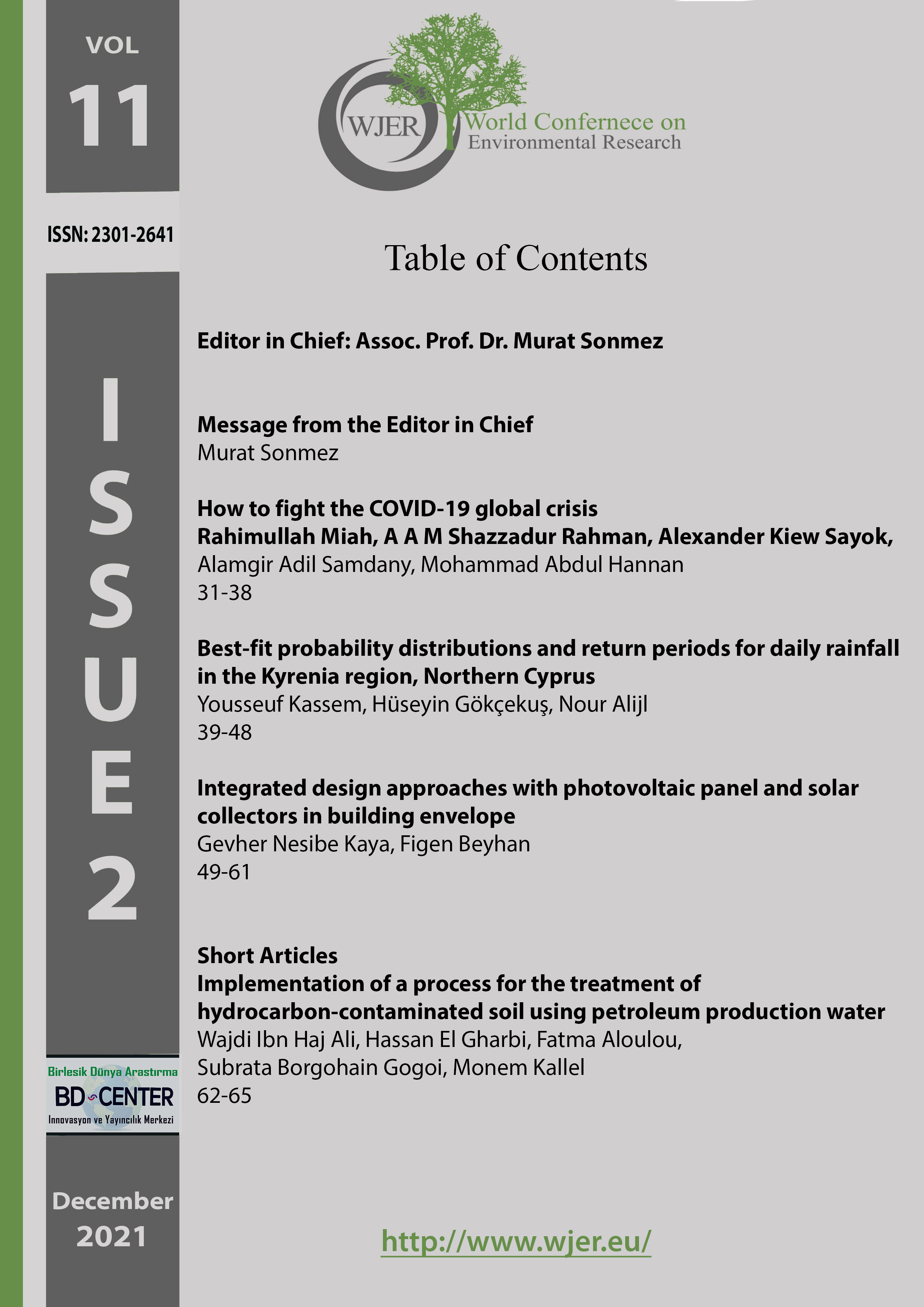Integrated design approaches with photovoltaic panel and solar collectors in building envelope
Main Article Content
Abstract
Resources are running out and the use of fossil resources, which threaten the future of life due to the negative environmental effects, and the limitations and cost increases caused by dependence on energy production have made energy efficiency the main priority of the world countries. In this context, efforts to obtain energy from alternative energy sources have gained momentum within the framework of the targets of safe energy supply and energy independence, as well as energy conservation. The use of solar energy has come to the fore among these studies with its accessibility, affordable cost and environmental effects. With the increasing tendency towards net zero energy buildings in the design of buildings, which have a large share in terms of energy consumption, approaches of "the buildings can meet the energy they need with the help of solar energy" have been developed. In this context, the aim of the study is to examine the integrated design principles and application methods of photovoltaic panels (PV) and solar collectors, which have found much more place in building envelope designs in recent years. First of all, PVs and solar collectors, defined as active solar systems, were examined in terms of system components, applicability and efficiency, then the design approaches of building integrated photovoltaic panels (BIPV) and building integrated solar collectors (BIST) were investigated detailed. Their advantages and disadvantages have been identified for the applications of these systems in buildings. Finally, the integrated design approach has been evaluated over the sample buildings. In the results, the potentials and importance of BIPV-BIST technologies in the context of energy efficiency were discussed, taking into account the integrated design approaches.
Keywords: Renewable, integrated design, BIPV, BIST, energy efficiency
Downloads
Article Details

This work is licensed under a Creative Commons Attribution 4.0 International License.
World Journal of Environmental Research is an Open Access Journal. All articles can be downloaded free of charge. Articles published in the Journal are Open-Access articles distributed under Attribution 4.0 International (CC BY 4.0)
